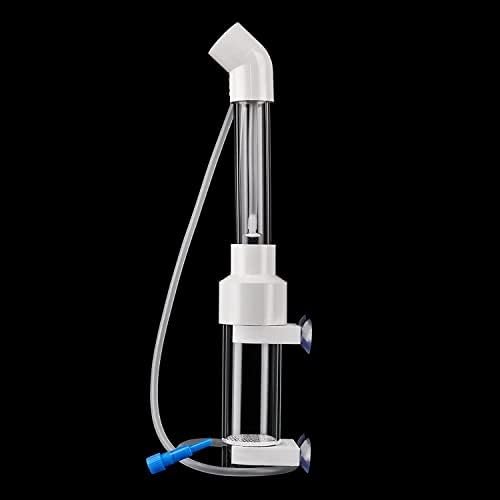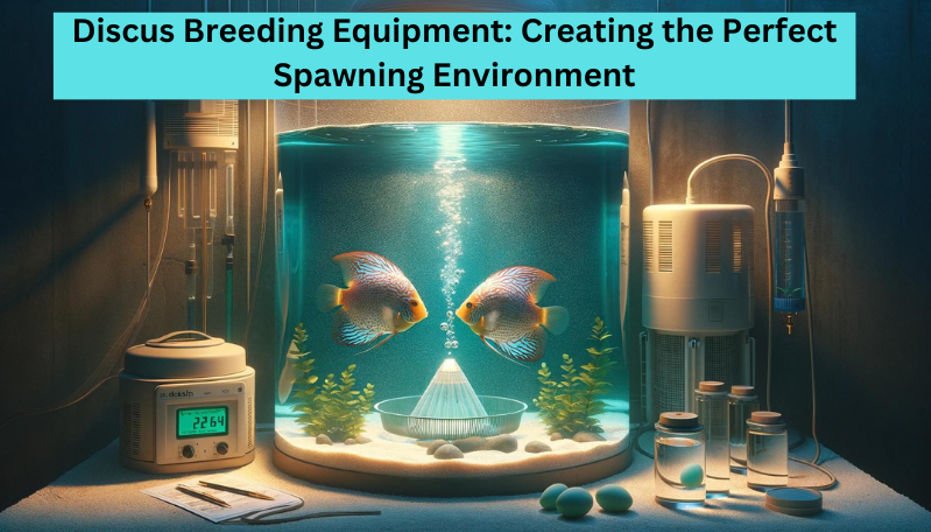Breed Perfect Discus Fish: Essential Gear & Proven Secretspen_spark
Discus fish breeding can be a rewarding yet challenging experience for aquarium enthusiasts. These Amazonian cichlids have specific spawning behaviors and requirements, and having the right equipment and environment is crucial for successful breeding. According to industry reports, successful discus breeding can be a lucrative endeavor for dedicated hobbyists. In this comprehensive guide, we’ll explore the essential breeding equipment for discus fish, including breeding cones, spawning mops, and egg tumblers, and provide tips on creating the perfect spawning environment.
Breeding Cones
Breeding cones are specialized structures that provide a secure and familiar spawning site for discus fish. These cones mimic the submerged tree branches or roots found in their natural habitat, where discus fish prefer to lay their eggs.

The ideal breeding cone should be made of a non-abrasive material, such as ceramic, PVC, or even natural materials like clay or coconut fiber. These materials are safe for the fish and their eggs and won’t cause any abrasions or injuries during the breeding process.
When setting up a breeding cone, it’s essential to place it at the right depth and ensure it’s stable and easily accessible. A depth of 6 to 12 inches (15 to 30 cm) below the water surface is generally recommended, allowing the discus pair to comfortably access the cone while also providing a degree of privacy and security.
DIY Breeding Cone Options
For hobbyists on a budget, DIY breeding cones can be created using materials like terracotta pots or PVC pipes. These homemade cones can be just as effective as commercial options, as long as they’re properly cleaned and positioned in the tank.
Spawning Mops
Spawning mops, also known as breeding mops or spawning pads, are another popular tool used in discus fish breeding. These mops consist of yarn, synthetic fibers, or natural materials like java moss, which are tied together and suspended in the aquarium.

Discus fish often deposit their eggs on the spawning mop’s fibrous surface, treating it as a substitute for their natural spawning sites. The mop’s fibers provide a secure attachment point for the eggs and make it easier to transfer them to an egg tumbler or separate rearing tank if needed.
When using spawning mops, it’s crucial to maintain good water quality and perform regular cleaning or replacement to prevent the buildup of waste and bacteria. This helps ensure a healthy environment for the eggs and fry.
DIY Spawning Mop Options
Creating your own spawning mop is a cost-effective option. Simply tie together strands of yarn, synthetic fibers, or java moss into a loose bundle, and suspend it in the breeding tank using a suction cup or weighted base.
Egg Tumblers
Egg tumblers are specialized devices designed to protect and nurture discus fish eggs during the early stages of development. These tumblers gently rotate or circulate the eggs, mimicking the parental care provided by the discus fish in their natural environment.

There are two main types of egg tumblers: mechanical and DIY (do-it-yourself) systems. Mechanical egg tumblers use a motor and a rotating cylinder to keep the eggs in gentle motion, while DIY systems often involve a simple setup with an air stone or powerhead to create water circulation.
Setting up an egg tumbler system involves transferring the fertilized eggs from the breeding cone or spawning mop and carefully placing them inside the tumbler’s chamber. The gentle rotation or water movement helps prevent the eggs from sticking together and ensures proper oxygenation and waste removal.
DIY Egg Tumbler Options
While mechanical egg tumblers can be expensive, hobbyists can create their own DIY versions using simple materials like plastic bottles, air stones, and powerheads. These DIY tumblers can be just as effective as commercial options, as long as they’re properly set up and maintained.
Creating the Conducive Breeding Environment
In addition to the right breeding equipment, it’s crucial to provide discus fish with an optimal breeding environment. Water parameters play a vital role in successful spawning and egg development.
Discus fish prefer warm, soft, and slightly acidic water conditions, with a temperature range of 82°F to 88°F (28°C to 31°C), a pH between 6.0 and 7.0, and low to moderate water hardness. Maintaining these parameters through regular water changes and proper filtration is essential.
The tank size and setup also contribute to a successful breeding environment. Discus fish require ample space to establish their territories and feel secure during the spawning process. A minimum tank size of 55 gallons (208 liters) is recommended for a single pair, with additional space for each additional discus fish.
Lighting conditions can also influence breeding behavior. Discus fish often prefer subdued or natural lighting during spawning, as bright or intense lighting can cause stress and disrupt their natural rhythms.
Finally, maintaining exceptional water quality through regular maintenance, filtration, and water changes is crucial for the health of the breeding pair and the developing eggs and fry.
Water Quality Tips
To maintain optimal water conditions for discus breeding, consider investing in a quality test kit and monitoring ammonia, nitrite, and nitrate levels regularly. Performing frequent partial water changes and using a high-quality filter can also help keep the water pristine.
Observing Breeding Behavior
To maximize your chances of successful discus fish breeding, it’s essential to observe and understand their breeding behavior. Here are some key signs to look for:
Signs of Readiness:
- Increased activity and courtship behavior, such as chasing and engaging in “dances”
- Cleaning and preparing potential spawning sites
- Development of breeding tubes or worm-like extensions in mature females
Monitoring Spawning Activity:
- Observe when the female discus starts releasing eggs onto the spawning cone or mop
- The male will follow closely behind, fertilizing the eggs
- Discus pairs may spawn multiple times over a few days
Using Breeding Cones and Spawning Mops Effectively:
- Monitor the breeding cone or mop for any signs of fungal growth or debris buildup
- Gently remove the fertilized eggs and transfer them to an egg tumbler or separate rearing tank
- Keep the breeding cone or mop clean and ready for future spawning events
Parental Care Behaviors
Discus fish are known for their exceptional parental care. After spawning, the parents will take turns fanning the eggs to provide oxygenation and remove debris. They may also move the eggs to a new location or consume any unfertilized or fungus-infected eggs.
By providing the right breeding equipment and creating a conducive environment, you can increase the chances of successful discus fish breeding. It’s a rewarding experience to witness these stunning Amazonian cichlids reproduce and raise their offspring in a well-prepared aquarium setup.
Conclusion
Breeding discus fish can be a challenging yet incredibly rewarding endeavor for aquarium enthusiasts. By investing in the proper breeding equipment, such as breeding cones, spawning mops, and egg tumblers, and creating an optimal spawning environment, you can significantly improve your chances of success.
Remember, patience, attention to detail, and a thorough understanding of discus fish behavior and requirements are essential throughout the breeding process. With the right tools and knowledge, you can enjoy the joy of witnessing these magnificent cichlids reproduce and raise their young in a well-prepared aquarium setup.
Have you tried breeding discus fish? Share your experiences and tips in the comments below! And if you’re new to discus breeding, consider joining an online community or consulting with experienced hobbyists for guidance and support.

